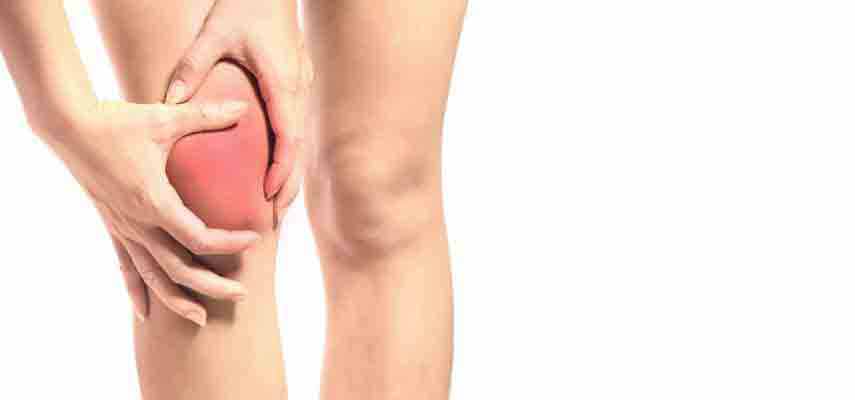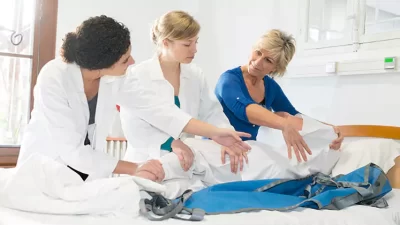Our joints are strong enough to allow us to move constantly, but at the same time, they are delicate and prone to damage, injury, pain, and other symptoms. Joint swelling is yet another common symptom that millions of people experience at some point.
In order to manage joint swelling adequately, you need to learn more about it and its causes which is also the main objective of this article.
What is Joint Swelling?
Each joint in a human body is cushioned and surrounded by soft tissues. Joint swelling is a common problem that occurs when there is an accumulation of fluid in these tissues. Rare are the instances when joint swelling happens on its own; it is usually accompanied by other symptoms such as pain, stiffness, and tenderness.
The first thing that a patient notices is increased size or irregular shape of the affected joint. Similarly to stiffness and other changes that people experience in their joints, swelling can be a sign of the injury that requires medical attention or it develops as a symptom of a chronic condition.
What are the Causes?

Joint swelling never occurs without a reason, it is always a reaction to some condition or injury. Unfortunately, many people completely overlook swelling and other symptoms affecting joints mainly because they think these things will go away on their own. It’s always recommended to see your doctor whenever you notice a change in mobility or joint size and shape.
There are about 128 causes of joint swelling[1] ranging from arthritis to injuries and infections. In order to understand the seriousness of joint swelling, let’s take a look at the list of some causes of this symptom.
1. Osteoarthritis
Osteoarthritis (OA) or degenerative joint disease is the most common type of arthritis. Basically, the primary cause of this type of arthritis is wear and tear.
The condition can affect any joint, but it is most prevalent in the knees, lower back, neck, hips, and small joints in hands and feet.
Osteoarthritis is caused[2] by a breakdown of cartilage which leads to pain, swelling, and mobility problems. Swelling usually affects the knees that bear weight for a longer period of time.
2. Rheumatoid arthritis
Rheumatoid arthritis (RA) is an autoimmune condition and the second most common type of arthritis. Like other autoimmune disorders, RA develops when the body’s immune system starts attacking healthy cells and tissues which are joints in this case.
In many patients, RA can affect lungs, skin, eyes, heart, and other organs too. While OA is associated with age-related wear and tear in cartilage, RA affects the lining of the joints.
As a result, a patient experiences painful swelling which can lead to deformity of an affected joint. Other symptoms[3] such as weight loss, fatigue, and fever also develop.
3. Gout

A gout is a form of arthritis, but unlike RA and OA which primarily affect women, it is more expressed in men.
The condition[4] is characterized by sudden and severe attacks of swelling, redness, tenderness, and pain in joints. In most cases, the big toe is affected.
Gout attacks occur suddenly and they oftentimes happen at night thus making a person wake up with pain and swelling in their big toe. Swelling and tenderness of the big toe (or some other joint) can be so severe that even bed sheets cause a distress.
4. Ankylosing spondylitis
Ankylosing spondylitis is an inflammatory disease that leads to fusion of the spinal vertebrae. Due to the fusing, the flexibility of spine decreases and contributes to poor posture. Like gout, ankylosing spondylitis is more prevalent in men.
The condition often involves swelling, redness, loss of mobility, warmth in joints, and pain in the affected area. Besides vertebrae, ankylosing spondylitis may also affect shoulders, ribs, hips, knees, eyes, and bowel due to inflammation.
5. Psoriatic Arthritis

Psoriatic arthritis is a type of inflammatory arthritis that also involves skin condition called psoriasis (red patches).
Most people who develop psoriasis also get arthritis later on, but the cause behind this condition is unknown.
Psoriatic arthritis may include joints on one side of the body or both and it is indicated by lower back pain, foot pain, and swollen fingers and toes along with red skin patches.

Other Causes of Joint Swelling
- Infectious Arthritis – Occurs due to a fungal, bacterial, or viral infection
- Joint Injuries such as dislocations, bone fractures, torn tendons, torn ligaments, sprains and strains
- Lupus – An autoimmune condition that affects joints and other organs
- Bursitis – Inflammation of bursae, small fluid-filled sacs that cushion the areas of friction between two tissues
- Lyme Disease – An infection caused by a bite of an infected deer tick
How is joint swelling treated?
The treatment plan depends on the underlying cause of the joint swelling. For example, if the swelling is a result of injury then at-home treatments could do the trick. You can minimize swelling by applying an ice pack or cold gel onto the affected area.
Cold also numbs the pain that usually accompanies swelling of the joint. It also helps to elevate the swollen joint, avoid making sudden movements, and take over-the-counter pain pills to alleviate discomfort.
On the other hand, if swelling is a result of a chronic condition then following a doctor-recommended treatment plan can help manage this symptom.
In this case, the treatment plan may involve physical therapy, prescription medications such as NSAIDs and steroids both of which alleviate pain and swelling.
Persons with arthritis or other conditions associated with joint swelling can benefit from modifying their diet.

Instead of junk food try consuming a well-balanced diet enriched with fruits, vegetables, especially anti-inflammatory foods.
Keeping weight in a healthy range is also recommended. Excess weight puts too much pressure on the joints, thus contributing to pain, stiffness, swelling, and other symptoms.
Read Next – The #22 Different Types of Joint Pain You Must Know
Conclusion
Joint swelling is a common occurrence and it is usually a response to an injury or chronic condition such as arthritis, lupus, and others.
Management of underlying condition helps tackle swelling too. A great way to relieve swelling is to apply cold compresses and elevate the affected joint.
Feature Image: Shutterstock.com
In-Post Image: Shutterstock.com & pennmedicine.org







 This article changed my life!
This article changed my life! This article was informative.
This article was informative. I have a medical question.
I have a medical question.
 This article contains incorrect information.
This article contains incorrect information. This article doesn’t have the information I’m looking for.
This article doesn’t have the information I’m looking for.